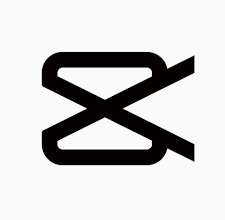Web3 Sites: The Dawn of a New Internet Era

The First Wave of Web3: An Introduction
What if there was a web where users were in control, truth is constant and privacy was a given? This visionary future has already begun to take shape through Web3. The term “Web3” is short for Web three. Zero; it refers to the next stage in the development of the internet, from being centralized into decentralized and individual-focused platforms as opposed to the architectures of Web1 and 2.
In this blog post, we will explore the key skills of Web3 sites, what role NFTs and blockchain play in them, tools needed to build these websites, and how future look like. Whether you’re a tech junkie or just curious about what’s next for the web – stick around! We’ve got your ultimate guide on riding out this wave of Web3.
Features of a Web3 Site
Decentralization
Web3 websites are based on decentralization. Unlike traditional websites that rely on central servers managed by particular entities, such sites function within decentralized networks. These structures minimize single points of failure exposure while making the environment more resilient and fairer.
For instance, platforms like IPFS (InterPlanetary File System) distribute data across several nodes, meaning that even when one node fails, information remains accessible. This leads to significant improvements in terms of data availability and integrity.
Improved Security Measures as Well as User Privacy Levels
Security and privacy are crucial elements within Web3 landscapes. In contrast to conventional webpages that store customer information on centralized servers thereby making them easy targets for hacker attacks; however, with Web3 sites such data is kept across distributed networks hence reducing breaches risks significantly.
Moreover, cryptographic methods like public-private keys make sure only authorized clients can get access to sensitive information. For example Ethereum smart contracts operate under strict cryptographic rules which provide secure online transactional arena thus promoting safe exchange between parties.
Empowering Users while Protecting their Data
Web3 focuses on individual empowerment and data control. In Web2, firms often exploit customer data without any form of control or compensation. Web3 reverses this trend by giving complete ownership of their digital identities and information back to users.
Platforms like Solid, created by Tim Berners-Lee, enable users to store their data in private online data stores (Pods). This way, users can give access to their information only to those they trust thereby creating a more equitable and moral approach towards managing information.
NFTs and the World Wide Web 3
How Non-Fungible Tokens Are Embedded into Web3 Websites
Non-Fungible Tokens (NFTs) have taken the digital world by storm; one of the most significant developments has been their integration into Web3 websites. NFTs are unique virtual assets stored on a blockchain that are commonly used for representing art, music or other forms of digital content.
With NFTs, web3 sites offer exclusive content, memberships, and ownership rights. For instance Open Sea and Rarible are platforms that facilitate the buying, selling and trading of NFT’s which makes them vital elements needed in the web3 space.
Examples of Use Cases in Reality
NFTs do not just stop at being virtual collectables; they have real-world applications as well. Artists can tokenize their work so that they get paid royalties whenever it is resold. Music artists can also release limited edition albums as NFT’s providing fans with exclusive proof of ownership.
In Axie Infinity, an NFT game, for example, the blockchain is used to represent in-game assets that allow players to buy and trade securely. This enhances not only the gaming experience but also creates new economic opportunities for gamers.
Role of Blockchain
Understanding Web3 through Blockchain Technology
The establishment of Web3 relies on blockchain technology. Basically, a blockchain is a decentralized ledger that records transactions across various computers. Hence it cannot be tampered with or viewed through making it perfect for many applications ranging from financial transactions to supply chain management.
Blockchain allows decentralized applications (dApps) operating without intermediaries in the context of Web3. A case in point is Ethereum’s blockchain, which has numerous dApps performing such services as finance (DeFi) and social networking.
Advantages and Likely Concerns
There are several advantages of using Blockchain in Web3. Security is enhanced; transparency is guaranteed while efficiency improves. Nonetheless, there are some problems as well. Scalability remains a significant problem because most blockchains are not capable of processing a large number of transactions quickly enough.
Environmental issues are another concern particularly for Proof of Work (PoW) blockchains like Bitcoin because they consume huge amounts of power. Nevertheless, alternative consensus schemes such as Proof of Stake (PoS) are being developed to solve these problems.
Building and Navigating Web3 Sites
Tools and Platforms for Creating Web3 Sites
Creating a web page on Web3 may appear overwhelming however there are various tools and platforms that make this process more manageable by far. Smart contract development on Ethereum can be simplified using frameworks like Truffle and Hardhat. On the other hand, libraries like Ethers.Js and Web3.Js facilitate interaction with the blockchain during front-end development process.
A platform like Moralis offers an all-inclusive development suite for the entire Web3 spectrum starting from consumer authentication up to real-time database updates. Such equipment empower builders to begin building strong, scalable Web3 web sites without having to start from scratch.
User Experience and Accessibility Considerations
Web3 websites must be designed with user experience (UX) and accessibility in mind in order for them to be widely adopted. However, as state-of-the-art as this technology is, it should still be user-friendly so that it can appeal to a wide target market. To attract users who are not familiar with blockchain technology simplified interfaces and intuitive design matter.
Accessibility is another key aspect. Hence Web3 websites must comply with web accessibility guidelines such that they can be used by everyone including persons with disabilities. To the extent that text-to-speech and keyboard navigation make Web3 websites more inclusive and user friendly.
The Future of Web3
Predictions on the Future Landscape of Websites and the Internet
With expectations of a more decentralized internet favoring customers, the future of Web3 appears bright. Blockchain technology’s adoption will increase across sectors such as finance health among others.
Decentralized finance platforms like Uniswap or Compound have already started changing perspectives about money. Similarly, decentralized social networks like Mastodon offer an alternative to traditional platforms where users control their data and content.
Potential Impact on Various Industries
It is beyond technology; Web3 might change whole industries. For example in healthcare, blockchain can ensure safe medical records that cannot be tampered with. In supply chain management it may provide transparency as well as traceability thus reducing frauds and improving efficiency.
Conclusion
Web3 is a new internet era that focuses on decentralization, security, and individual empowerment. Web3 websites offer glimpses of the future of the internet from NFTs and blockchain to user-friendly tools and inclusive designs.
This is an exciting time for techies who want to explore and interact with these emerging technologies. You can be ahead of the curve by understanding the abilities and potential of Web3, and participating in this revolutionary shift.
Are you ready for a deep dive into Web3? Start exploring today and discover infinite possibilities in this new frontier of the internet.




